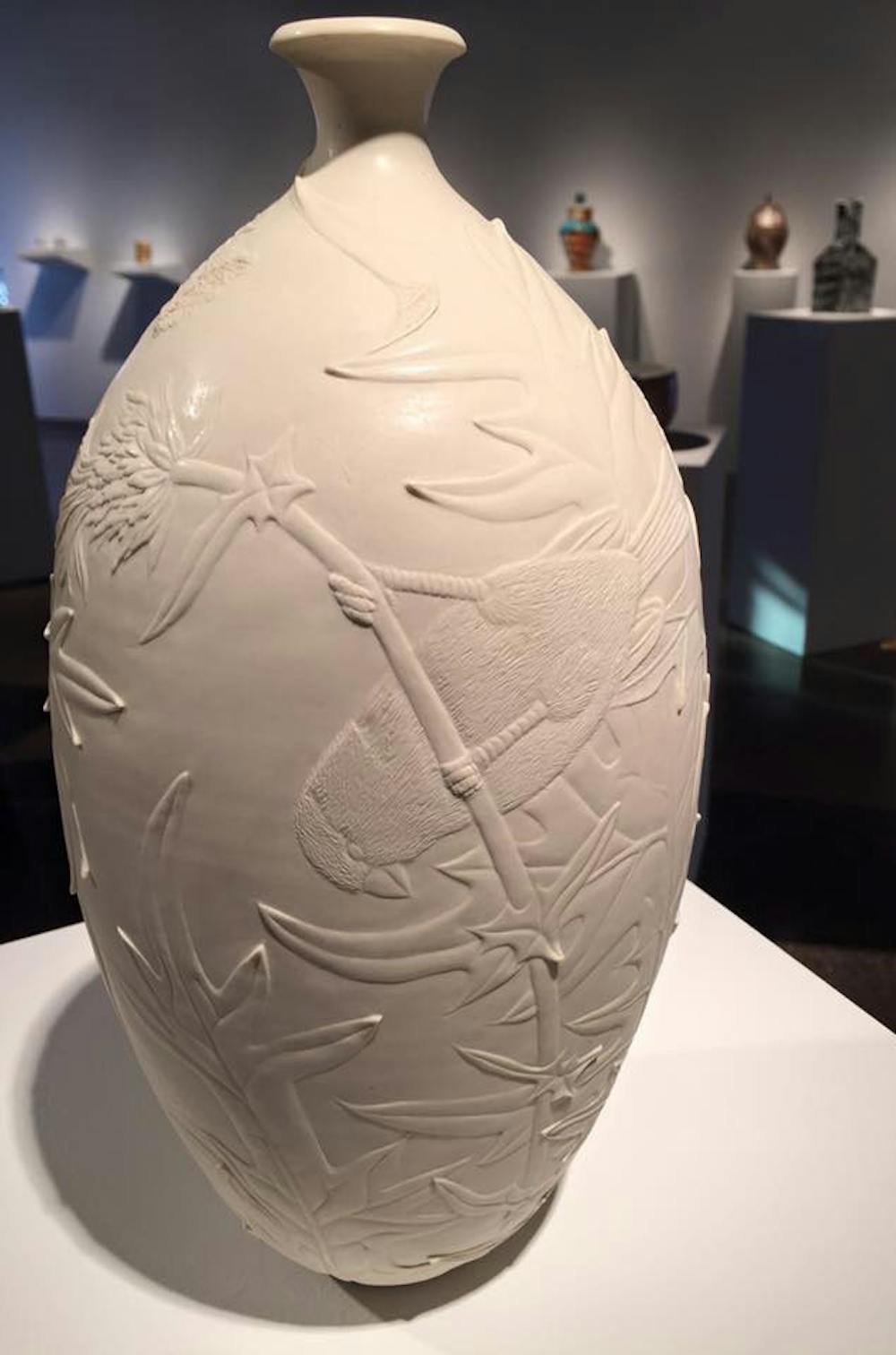The “Ceramics Invitational” exhibit, currently on display at the Kauffman Gallery in the Huber Art Center, is a pleasant showing of the artistic creativity that can be found in the art of ceramics. The open floor plan and use of natural lights are ideal for the spectacular pieces.
This collection contains hand-picked works from some of the best artists that competed in the Strictly Functional Pottery National Competition held in Lancaster, Pennsylvania. These works range from wood fire to polish-treated pieces and ceramic, decals to printed techniques on clay. All of these styles are ones you have to see to believe.
Porcelain is known for its fragility, so the pale carvings in the smooth surface illuminated by the gallery lights are truly striking. Every detail of the leaves, vines and bird feathers on JoAnn F. Axford’s porcelain pieces feels as if it had been snatched from a bright spring day and transcribed on the creations’ smooth surface.
The stems of the plants travel up the sides of the vase and around the edges of the bowl in an effortless manner, as if they are growing free and wild. According to her blog, Axford has been known to spend up to 95 hours detailing one piece of work.
Steven Cheek’s piece, “Killing Field Bottle” shows similar focus to detail in his designs, but he uses a dark glaze as slight shading around his skulls to produce a haunted container as sinister as its name. The disembodied skulls float around the piece like a spooky river. Bryre Rehm, a senior art major, said it reminded him of Pandora’s Box and a thing of legend. The details on these works are carefully carved into the porcelain surface with old dental tools and X-Acto knives to bring the designs to life before they are placed in an electric kiln and fired twice at different temperatures. Afterward, they are polished by hand, which usually takes a few hours.
There are two works that look like something found in an old barn. Stephen Rosini’s “Oil Can” appears to be an old oil can used to pour small amounts of oil into a tractor engine, but one would never think that it was really made of clay and not bronze. It is strategically stained and sanded to give the appearance of years of use, adding to its realism. On his website, he says, “As a potter, I am primarily interested in function; I like my pieces to be used in everyday life.”
Stephen Heywood’s “Teapot with Base” is designed to look as if it was a recently polished metal teapot just waiting to be used to serve guests. These pieces are so carefully crafted and detailed that they could be mistaken for metal. This is due to the dark glaze added to the ceramic pieces before they are placed in the kiln for the last time. The end result is the illusion of a rustic metal form.
Professor Ben Culbertson, one of Shippensburg University’s art department ceramics teachers, is the curator of this exhibit. Out of the 110 artists who came from across the country to participate in the Strictly Functional Pottery National Competition, Culbertson chose 51 pieces to display on campus for the Shippensburg community.
This exhibit will be presented in the Kauffman Gallery in the Huber Arts Center from Jan. 25 to Feb. 4 from 8:30 a.m. to 4:30 p.m. For more information, contact Professor Ben Culbertson at brculb@ship.edu.




The Slate welcomes thoughtful discussion on all of our stories, but please keep comments civil and on-topic. Read our full guidelines here.